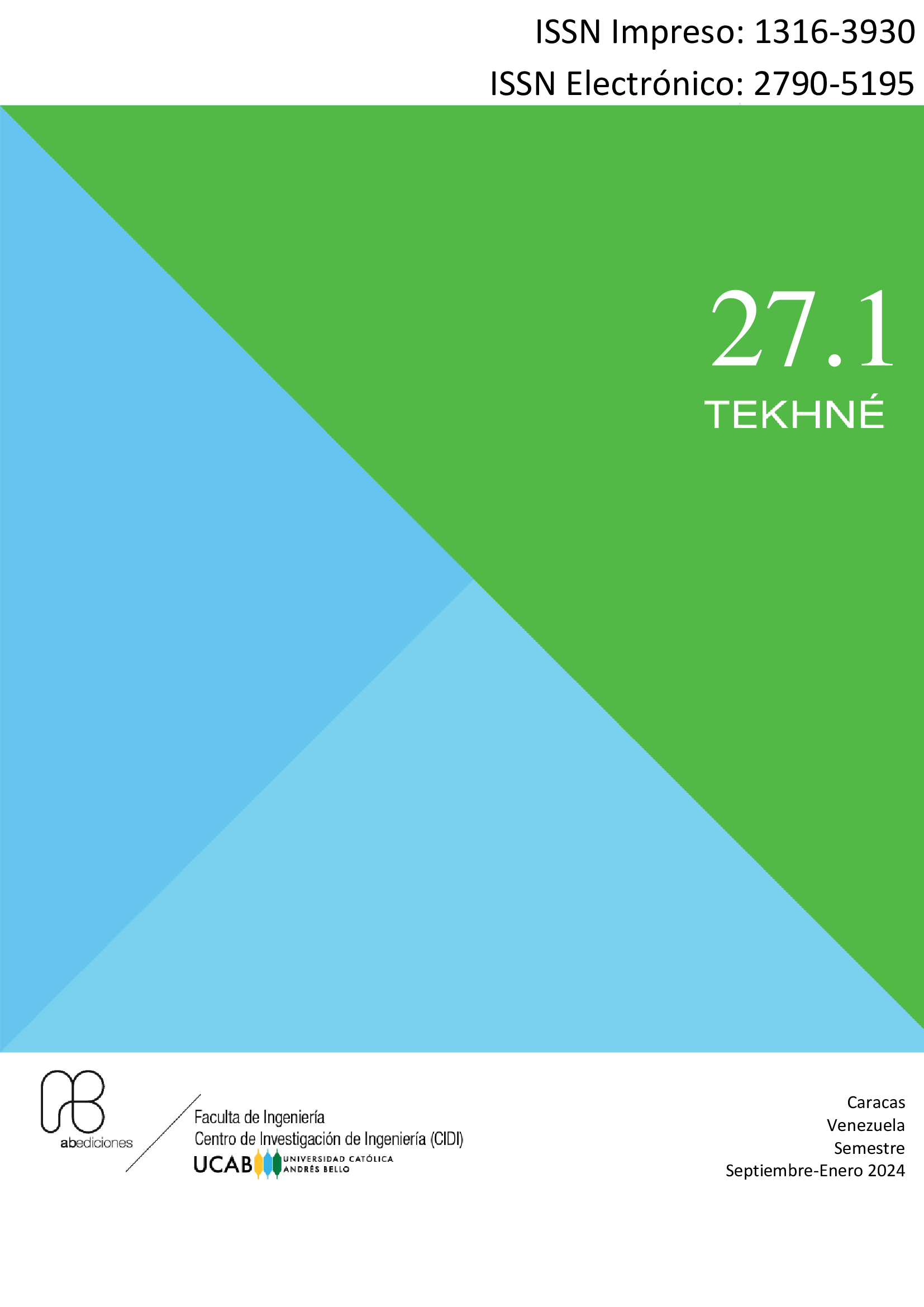Structural design for a CityTree based on the use of energy produced by microbial-plant fuel cells
DOI:
https://doi.org/10.62876/tekhn.v27i1.6173Keywords:
CityTree, microbial-plant fuel cells, energy, mossAbstract
Generating alternatives that provide a possibility to reduce CO2 in the atmosphere, and taking advantage of the presence of plants are fundamental factors to combat climate change. To contribute to this, the present work aimed to reinvent the design of the City Tree considering the production of electrical energy in parallel to its main function of purifying the air through the natural properties of moss by integrating plant-microbial fuel cells. For this purpose, a removable structure was designed with reference to standardized L-profiles and ASIC standards regarding the elastic vector method for the selection and location of non-permanent joints, resulting in M16x2 bolts. Additionally, a system of cells was integrated with cylindrical graphite electrodes in the form of grids arranged at an inclination of 21.5º, totaling 480 cells with moss, whose survival capacity due to watering was addressed through a gravity irrigation system. Additionally, a stress analysis was carried out on the most critical elements of the design in terms of buckling and reflection on them, which finally allowed establishing stainless steel as the ideal material, since it offers resistance to corrosion due to humidity to manufacture the proposed design.
Keywords: CityTree, energy, microbial-plant fuel cells, moss.
Downloads
References
J. Olivier, “Trends in global CO2 and total greenhouse gas emissions - 2021 summary report”, Netherlands Environmental Assessment Agency, Netherlands, Tech. Rep. 4758, 2022.
A. Diaz, G. Marrero, L. Puch, “Cambio climático, crecimiento económico y el papel de las tecnologías energéticas”, Papeles de economía española, vol. 164, no. 2, pp. 120-133, junio de
P. Artigas, (octubre de 2014). Principales contaminantes del aire [Online]. Available: https://montevideo.gub.uy/areas- tematicas/ambiente/calidad-del-aire/principales- contaminantes-del-aire
S. Rojas, A. Aburto, N. Espilco, J. Minchola, M. Rodríguez, O. Fernando, K. Mendoza,
“Electricidad a partir de plantas vivas”, Cientifi-K, vol. 6, no. 1, pp. 36–40, junio de 2018.
CESYT y Green City Solutions, “Propuesta CityTree”, Green City Solutions, Alemania, Tech., 2020.
EcoInventos. (2017, junio 26). CityTree, un ‘árbol’ urbano autónomo que limpia tanto aire contaminado como un bosque entero [Online].
Available: https://ecoinventos.com/citytree/
Tierra. (s.f). CityTree, el panel de musgo que equivale a 275 árboles [Online]. Available: https://tierramarketing.es/CityTree-el-panel-de- musgo-que-equivale-a-275-arboles/
Green City Solutions. (s.f.). Solution [Online]. Available: https://greencitysolutions.de/en/solution/
R. Rodriguez, M. Alvarez, “Production of electrical energy from living plants in microbial fuel cells”, Clean Energy, vol. 7, no. 2, pp. 408–416, 2023.
J. Lynch, F. De Leij. (2012). Rhizosphere. [Online]. Available:
https://onlinelibrary.wiley.com/doi/10.1002/978047 0015902.a0000403.pub2
D. Strik, B. Hamelers, J. Snel, H. Hamelers, “Green electricity production with living plants and bacteria in a fuel cell”, International journal of energy research, vol. 32, no. 9, pp. 870–876,
December 2008.
P. Bombelli, A. Driver, C., Peralta. (2011). Biophotovoltaics – Design in Science. [Online]. Available: http://observatoire-ecodesign.com/wp- content/uploads/2011/12/Biophotovoltaics-Design- in-Science3.pdf
Mediamatic. (s.f). Moss table Biophotovoltaic energy [Online]. Available: https://www.mediamatic.net/en/page/37560/moss- table
Inhabitat. (2015). Biophotovoltaic Moss Table Generates Electricity Through Photosynthesis [Online]. Available: https://inhabitat.com/moss- table-by-biophotovoltaics-generates-electricity- through-photosynthesis/
M. Helder, “Design criteria for the Plant-Microbial Fuel Cell: Electricity generation with living plants – from lab to application”. Ph.D. dissertation, department of Environmental Technology, Wageningen University, Wageningen,
Netherlands, 2012. https://edepot.wur.nl/239054
Ibeira, H. (2021). Tanques de almacenamiento: tipos, materiales y usos [Online]. Available: http://www.haleco.es/tanques-almacenamiento- tipos-materiales-usos
Alquievas Group. (s.f.). Filtros para agua pluvial [Online]. Available:
https://www.alquienvas.com/productos/16- filtro_eco_50-804-101.html
Portillo, G. (s.f.) Plásticos ABS: características, origen, usos e importancia [Online]. Available: https://www.renovablesverdes.com/plasticos-abs/
Downloads
Published
How to Cite
Issue
Section
License
Copyright (c) 2024 Tekhné

This work is licensed under a Creative Commons Attribution-NonCommercial-ShareAlike 4.0 International License.




